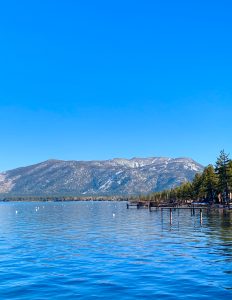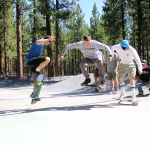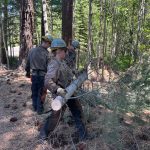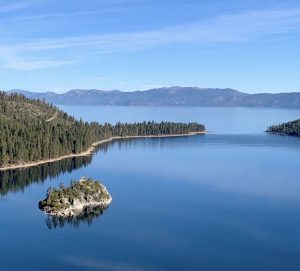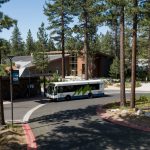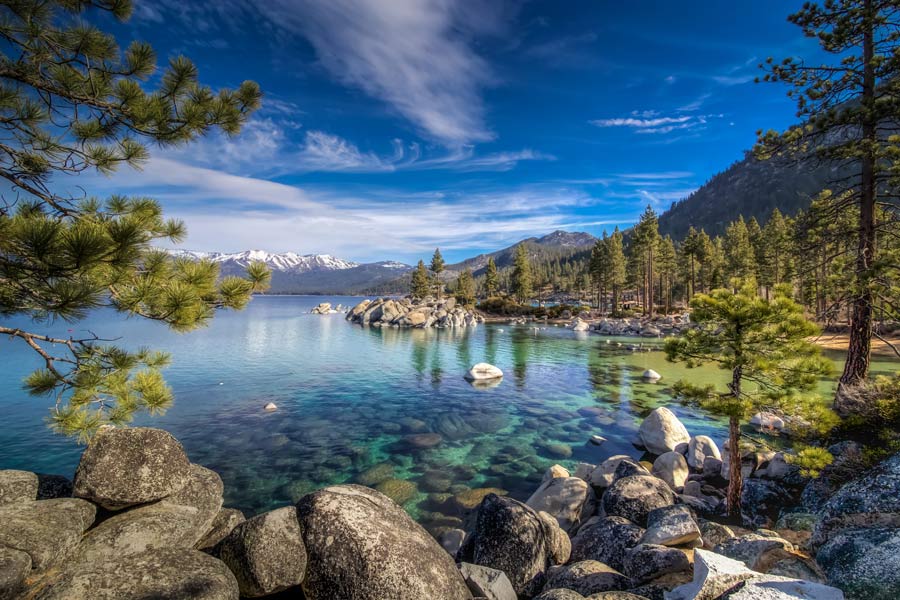Upside down U.S. flag displayed on mountain peak above Tahoe
MEYERS, Calif. – Two climbers were met with an upside down U.S. flag after summiting Flagpole Peak above the Echo Lakes on Tuesday, June 10. Although unclear what the intent behind this display is, an upside down flag is meant to signal dire distress according to the U.S. Flag Code. It has more recently been used to signify a threat to public lands amid this year’s DOGE cuts.
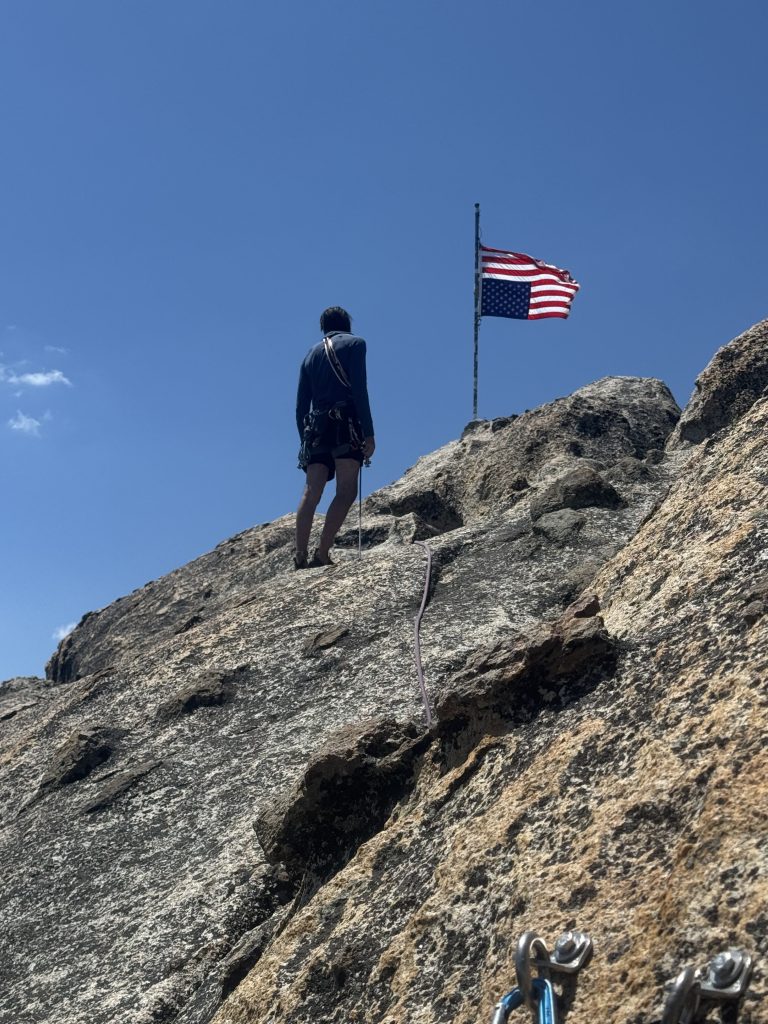
On February 22, a group of both former and current Yosemite National Park Service employees hung a 30×50-foot U.S. flag upside down off El Capitan near Horsetail Falls. Their display occurred during the fleeting annual Firefall event when the waterfall glows orange around sunset for just a handful of days.
In early March, another group protested the DOGE cuts at Rocky Mountain National Park with an upside down flag.
It’s unclear who placed the flag or how long it’s flown atop Flagpole Peak, which is visible from Meyers, Highway 50 and portions of Echo Lakes. Climbers Tadd Perkins and Nicholas Schwab initially spotted the flag on Flagpole Peak on their hike up to their climbing route, but couldn’t discern the flag.
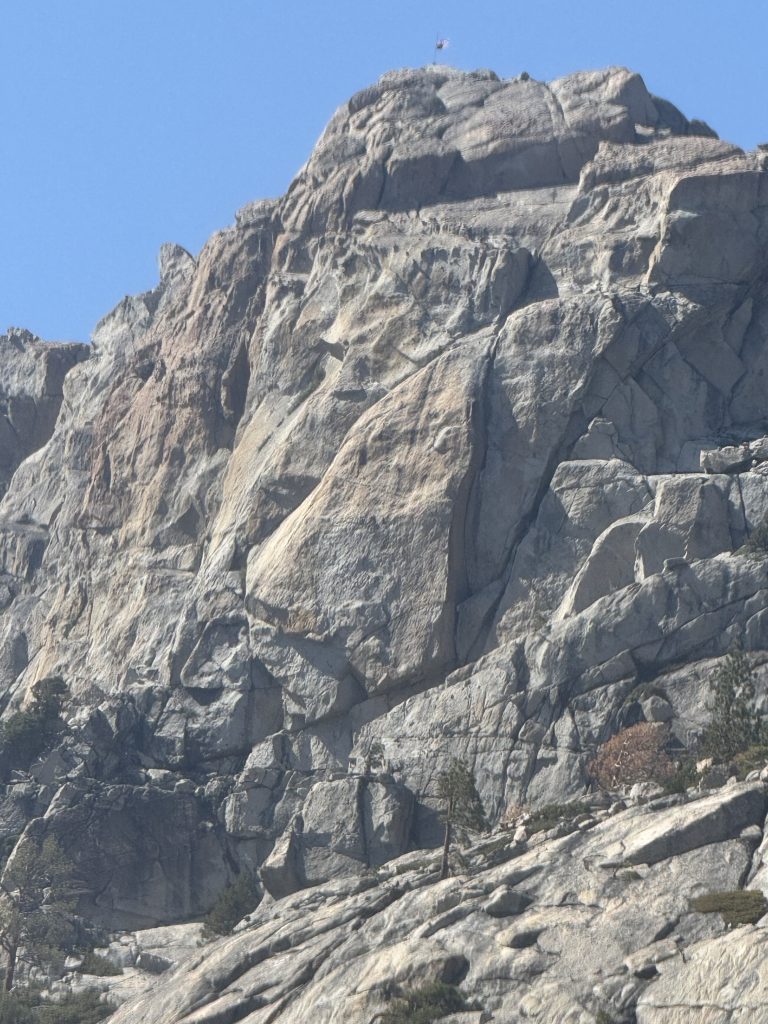
As they ascended, it became evident.
“That it was an American flag displayed upside down made us think of the powerful political message, even though this flag was distant and relatively small,” Perkins said. “It made us think of the effort expended to put it up on this summit, and how the strong feelings of our times can resonate with how a flag is displayed.”
The Tahoe Basin has had its own set impacts following DOGE cuts. The Tribune reported in May on 16 Americorps members cut mid-term in the Tahoe Basin from the fallout of canceling funding to AmeriCorps programs nationwide. The decision was met with a lawsuit from 24 states, including California. That story is titled, AmeriCorps cuts hit Tahoe: ‘This is not just about losing funding’
A U.S. District Court Judge has since ruled in favor of restoring certain AmeriCorps grants and reinstating members. An appeal from the Trump Administration is expected by mid-August.
Flagpole Peak lies within lands managed by the USDA Forest Service under the Lake Tahoe Basin Management Unit.
“We are aware of the public attention surrounding the display of an upside-down United States flag at this location,” Lisa A. Herron said, public affairs specialist for the Forest Service.
The service says at the national level, there is no policy prohibiting hanging banners, flags or signs and it is considered a protected form of speech.
However, according to Forest Service law enforcement, this activity falls under federal occupancy and use guidelines pertaining to abandoned property. Basically, the regulation prohibits abandoning personal property on National Forest System lands.
“Another consideration,” Herron says, “is how the flag was put up as any activity that involves construction, digging or any kind of improvements on National Forest System lands requires a permit.”
Following the February demonstration in Yosemite, the National Park Superintendent prohibited the hanging of a banner or flag larger than fifteen square feet to natural and cultural features. The regulation was a part of the Superintendent’s Compendium released in May.
The presentation of an upside down flag for protest dates back at least 50 years and has been documented for both left and right dissent, including at the Jan. 6, 2021 U.S. Capitol riot and following the overturning of Roe v. Wade.
The U.S. Flag code outlining the occasion for an upside down flag falls under subsection 8, titled “Respect for flag,” stating: “The flag should never be displayed with the union down, except as a signal of dire distress in instances of extreme danger to life or property.”
The code is largely unenforceable, using phrases like “should” and “may.” A Supreme Court case in 1989, which ruled flag burning as protected free speech under the First Amendment, largely influenced the unenforceable nature of the code. It now largely acts a code of etiquette for properly displaying and handling the U.S. flag.

Support Local Journalism

Support Local Journalism
Readers around the Lake Tahoe Basin and beyond make the Tahoe Tribune's work possible. Your financial contribution supports our efforts to deliver quality, locally relevant journalism.
Now more than ever, your support is critical to help us keep our community informed about the evolving coronavirus pandemic and the impact it is having locally. Every contribution, however large or small, will make a difference.
Your donation will help us continue to cover COVID-19 and our other vital local news.

